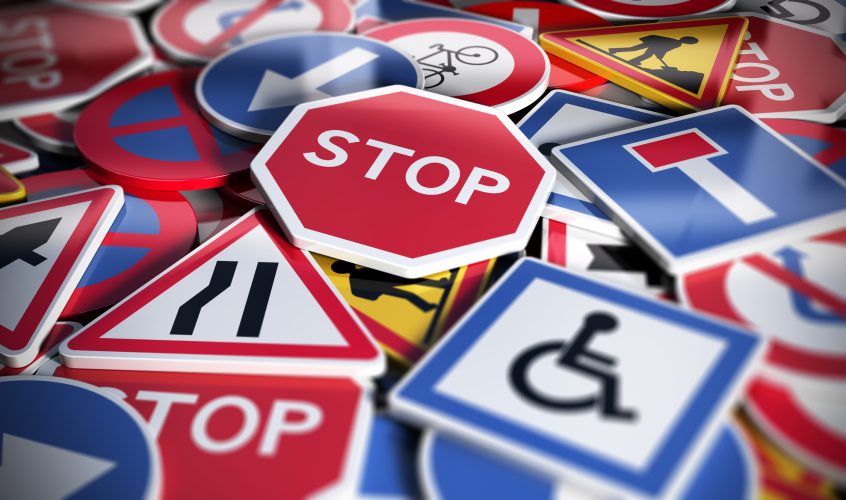Don’t Assume that the Rules of the Road are the same all Throughout Canada – Every Province is Unique
Canada’s provinces and territories definitely have their similarities and their differences. This is true when it comes to the rules of the road. For the most part, the traffic rules between provinces and territories are the same. However, drivers need to be aware of the unique rules that apply throughout Canada to avoid any problems when driving outside their home province. Remember, ignorance of the law is not a defence.
Although not exhaustive, here are some of the various unique rules of the road throughout Canada. This article is not meant to be legal advice or a definitive discussion of each province’s traffic laws and rules of the road. This article is meant for entertainment purposes only. Always do the necessary research and check with the appropriate ministry in each province to familiarize yourself with their particular laws and rules.
Regardless, start your engine, fill up your tank and let’s get started!
Left Lane Driving
When driving on a highway, in most provinces, you are permitted to travel in any preferred lane. However, sections 321- 325 of the Quebec Highway Safety Code, do not permit drivers to travel in the leftmost lane unless they are doing so to pass another vehicle or to make a left turn.
In British Columbia, section 151.1 of the province’s Motor Vehicle Act requires drivers to exit the leftmost lane if another vehicle is approaching. Unlike Quebec however, BC does not specifically ban drivers from using the leftmost lane as a travelling lane.
Passing Other Drivers
In Prince Edward Island, section 154 of their Highway Traffic Act requires drivers to sound their horn when overtaking another vehicle. Similarly, in Nova Scotia, the Driver’s Handbook also suggests that a driver should honk their horn when passing. Good thing we don’t have such a requirement in Ontario; you would hear horns honking all day.
Winter Tires
Although highly recommended (not to mention the insurance discount), in Ontario, you are not required to have winter tires during the winter season. In Quebec however, winter tires are mandatory on December 1 and March 15 for vehicles registered in Quebec.
British Columbia requires winter tires or chains on vehicles when travelling on marked routes from October 1 to April 30. For select highways not located through mountain passes and/or high snowfall areas, tire and chain requirements end on March 31. The routes are marked with signs posted throughout BC. Given the often treacherous and unpredictable winter mountain conditions, this law is enforced by the police. If you fail to observe the signs you could be turned away or fined. The requirement for winter tires or chains applies to all vehicles traveling in BC regardless of where they are from. Being from out of province does not mean the rules don’t apply to you as well. If you are driving in BC during those particular months make sure you have the right tires.
Red Lights
Provided there is no sign preventing it, throughout all of Quebec, you are allowed to make a right turn on a red light. However, on the Island of Montreal, you are not permitted to make a right turn when the traffic light is red. If you do make a right turn on a red in Montreal, you will be ticketed and fine. Another interesting law in Quebec is that you can be ticketed and fined for honking at someone who is stopped at a red light waiting to turn when there is no reason for you to honk. Being impatient is not a good enough reason!
Want to avoid a light and take a shortcut through a plaza or gas station? Well, you can’t do that in Quebec. In Quebec, you may not use private property to avoid a traffic light. Best to wait, rather than lose even more time waiting for an officer to give you a ticket.
Green Traffic Lights
In most provinces including Alberta, Ontario, Quebec, New Brunswick and Nova Scotia, a flashing green light means that you can turn left, go straight, or turn right. However, if you are travelling in BC, driving through a flashing green could result in you being fined or worse, someone getting seriously injured. According to Section 131(1) of BC’s Motor Vehicle Act, a flashing green means that pedestrians are permitted to safely cross the road and vehicles must permit them to do so.
U-turns
In many provinces including Manitoba, Ontario, Quebec, New Brunswick and PEI, a driver is legally able to make a U-turn at any intersection unless expressly prohibited. Most of these provinces have additional exceptions. For example, in Manitoba and Ontario, you can’t make a U-turn at a curve in the road or at the crest of a hill. Ontario also prohibits U-turns at railway crossings and near a bridge or tunnel with an obstructed view.
In contrast, B.C., Alberta and Saskatchewan ban U-turns at intersections with traffic lights unless there’s a sign allowing it.
This blog was co-authored by summer law student Adriana Piccolo.
